 |
 |
 |
| |
Incidence and clearance of anal high-grade squamous intraepithelial lesions (HSIL) in HIV positive and HIV negative homosexual men, preliminary interim report
|
| |
| |
This data presentation was on preliminary data from an ongoing study. This is an interim analysis, the study continues to enroll, and the analyses are not final. They will be completing baseline recruitment of 600 men by mid next year.
Reported by Jules Levin
October 7, 2014
16th International Workshop on Co-morbidities and Adverse Drug Reactions in HIV - Philadelphia, PA
Andrew Grulich, Fengyi Jin, I Mary Poynten, Jennifer Roberts, Annabelle Farnsworth, David Templeton, Sepehr Tabrizi, Suzanne Garland, Andrew Carr, Christopher Fairley, Richard Hillman on behalf of the SPANC Study Team
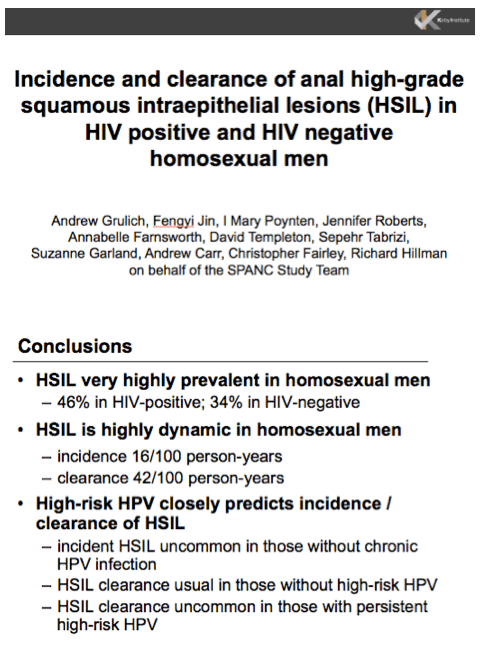
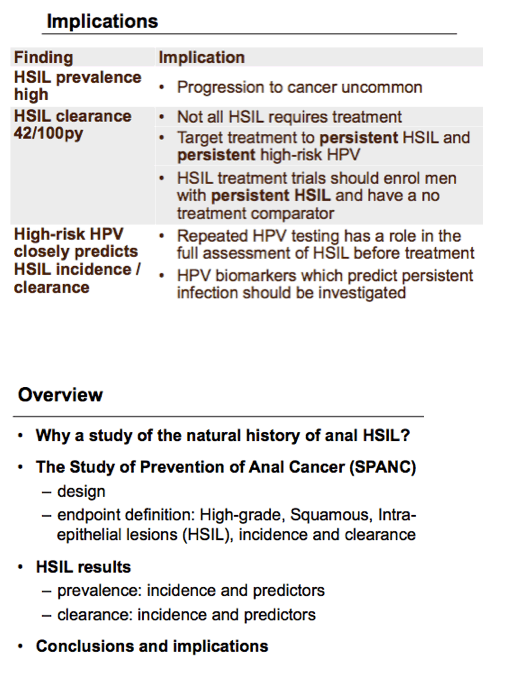
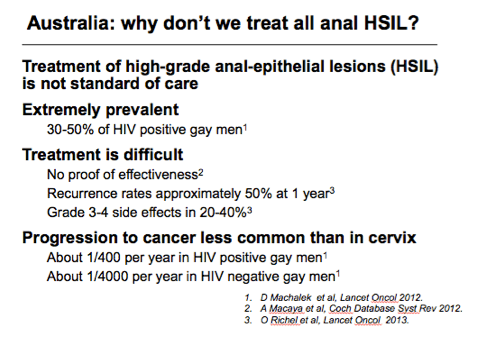
Program abstract:
Incidence and clearance of anal high-grade squamous intraepithelial lesions (HSIL) in HIVpositive and HIV-negative homosexual men
AE Grulich1, F Jin1, IM Poynten1, J Roberts2, A Farnsworth2, DJ Templeton1,3, SN Tabrizi4, SM Garland4, A Carr5, CK Fairley6, RJ Hillman5,7, the SPANC Study Team
1University of New South Wales, Kirby Institute, Sydney, Australia; 2Douglass Hanly Moir Pathology, Sydney, Australia; 3Royal Prince Alfred Hospital, RPA Sexual Health, Sydney, Australia; 4University of Melbourne, Royal Women's Hospital, Melbourne, Australia; 5St Vincent's Hospital, Sydney, Australia; 6Melbourne Sexual Health Centre, Melbourne, Australia; 7University of Sydney, Western Sydney Sexual Health Centre, Sydney, Australia
Background: Anal cancer is a common non AIDS-defining cancer in people with HIV and incidence has not decreased despite the widespread availability of effective HIV treatment. The cancer precursor, anal HSIL, occurs in up to 50% of the highest risk population, HIV-positive homosexual men. Ablative therapies of uncertain efficacy are advocated, but some prefer watchful waiting with therapy targeted only to the highest risk lesions. We aimed to determine incidence, clearance and associated risk factors for anal HSIL in a community-recruited cohort of homosexual men.
Methods: The Study of the Prevention of Anal Cancer (SPANC) is a 3-year prospective study of the natural history of anal HPV infection and cancer precursors in HIV-negative and -positive homosexual men aged ≥35 years. At each visit all men receive an anal swab for cytology and HPV genotyping (Roche Linear Array), followed by high resolution anoscopy-directed biopsy for histological assessment. Anal HSIL is defined as having either anal intraepithelial neoplasia grade 2/3 on histology and/or HSIL on cytology.
Results: The first 350 men were recruited by July 2013. Median age was 49 and 29% were HIV-positive. At baseline, the prevalence of anal HSIL was higher in HIV-positive than in the HIV-negative (45% vs 35%, P=0.059). Among those without HSIL at baseline, HSIL incidence was nearly twice as high in HIV-positive men (21.3 vs 12.3 per 100 person-years, P=0.064). Among those with HSIL at baseline, the clearance rate was similar between the two (34.0 vs 40.2 per 100 person-years, P=0.627). Compared with those who were HPV16 negative at both baseline and the latest follow-up visit, those who developed incident HPV16 had the highest HSIL incidence (HR=16.81, 95% CI 5.97-47.36), followed by those who had persistent HPV16 (HR=9.32, 95% CI 3.95-21.96). Conversely, HSIL clearance was lowest in those with persistent HPV16 (HR=0.22, 95% CI 0.11-0.46).
Conclusions: Prevalent and incident anal HSIL were more common in HIV-positive homosexual men, but clearance was common regardless of HIV status. Persistent HPV16 was associated with higher incidence and lower clearance. The role of HPV biomarkers in identifying those HSIL lesions most likely to require therapy should be investigated.
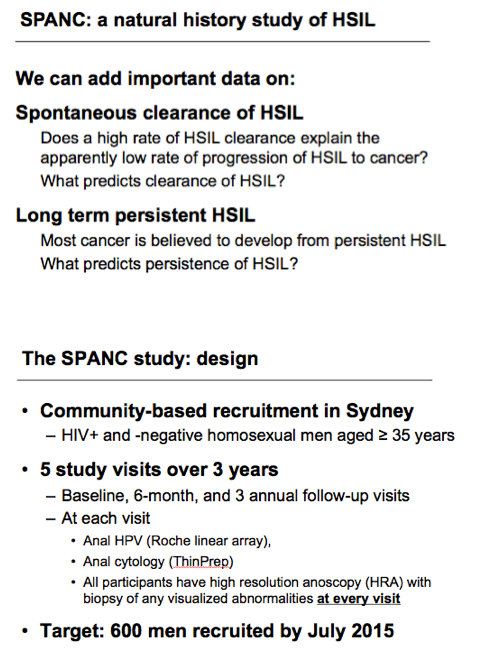
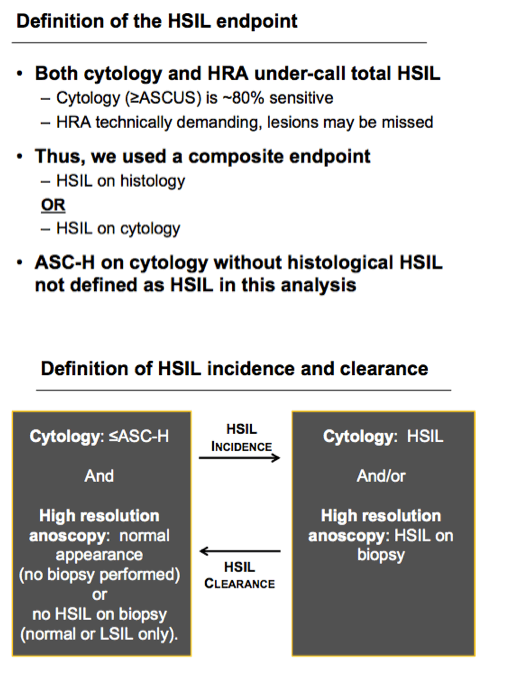
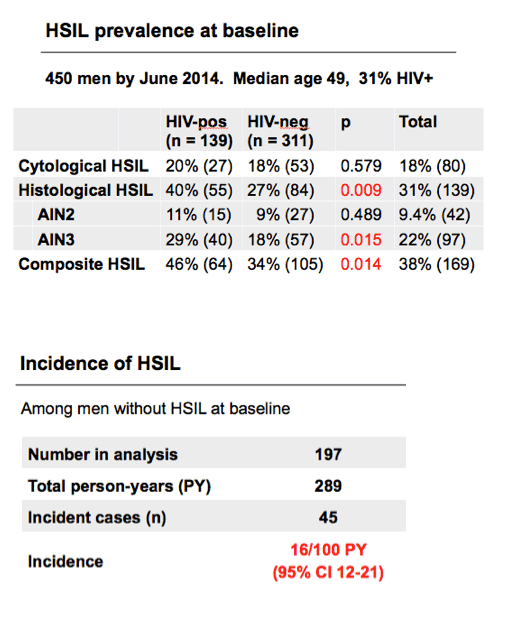
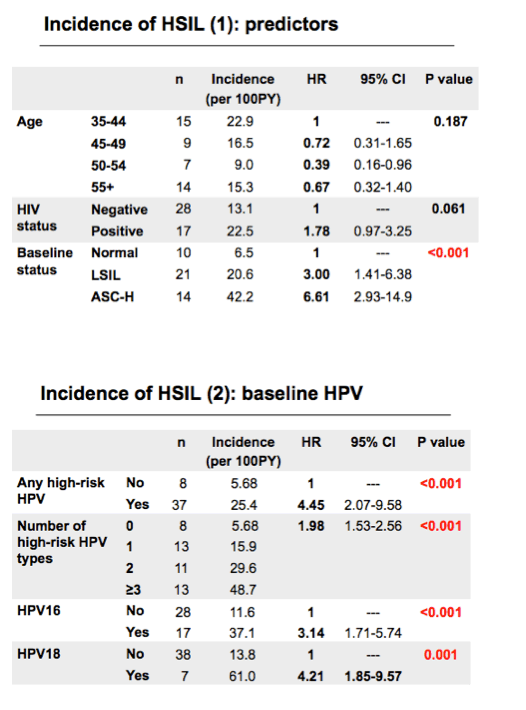
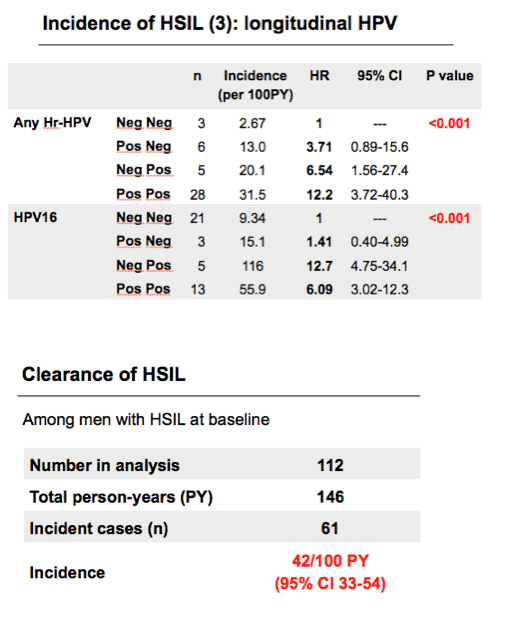
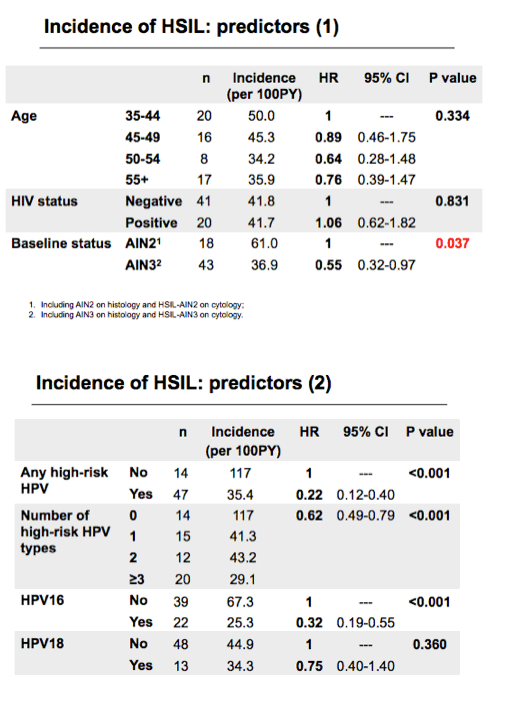
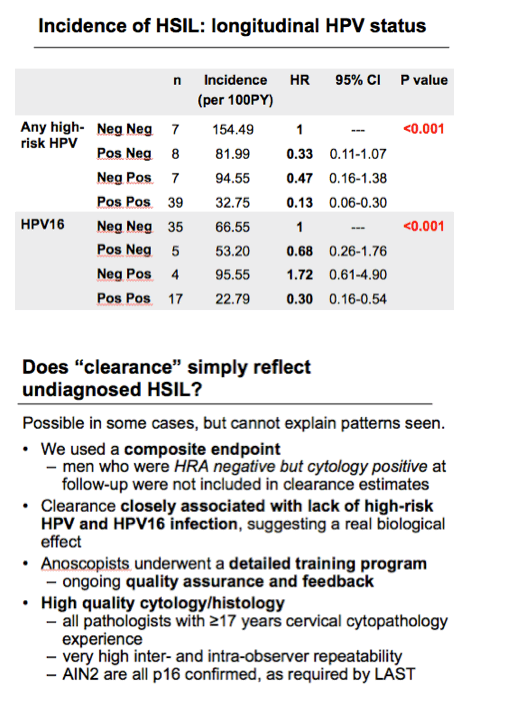
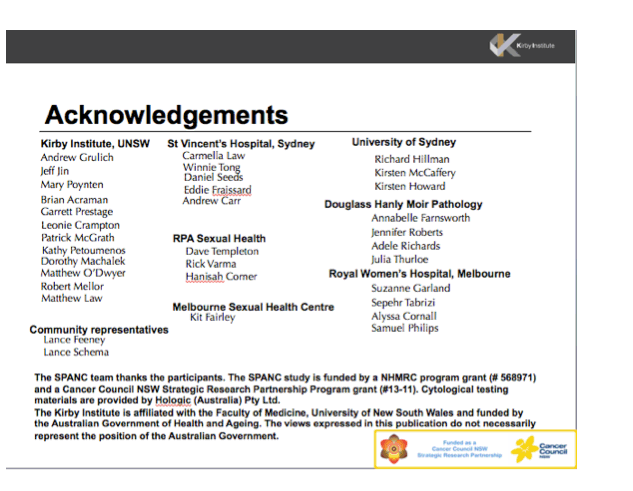
|
| |
|
 |
 |
|
|